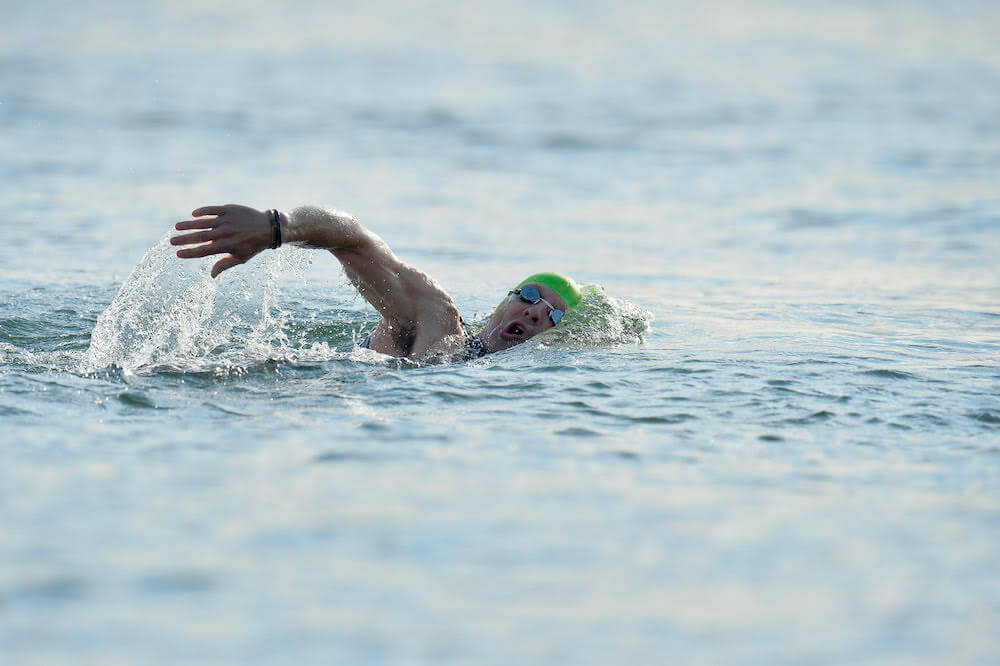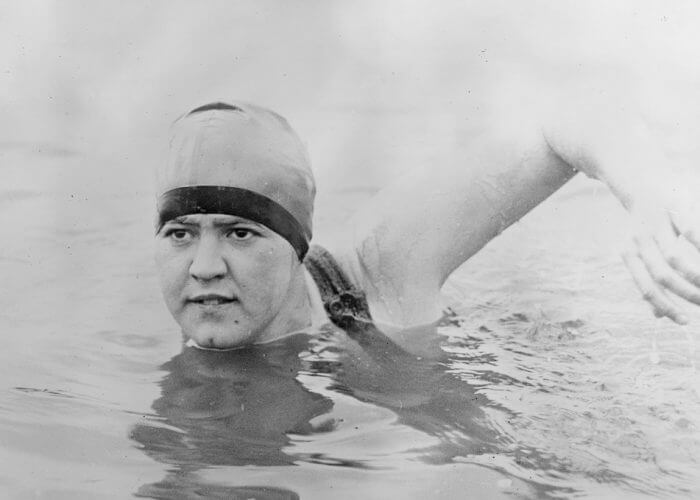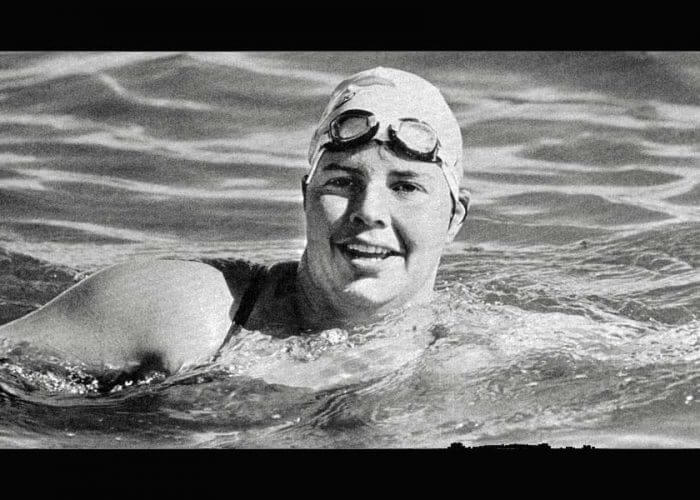Why Women Have Beaten Men in Marathon Swimming?

Can Women Beat Men in Marathon Swimming?
By Daniela Navarrete, Swimming World College Intern.
Swimmers have biological differences that affect their performance according to their sex. Women have lower hemoglobin levels, oxygen supply, and do not develop as much muscular power. Therefore, in sprint events, women are quite far from reaching men. However, ultra-distance swimming is a different story. With time, they have been getting closer and have even beaten the men.

Photo Courtesy:
Ultra-distance swimming, often called marathon swimming, is any event longer than 10km and six hours. This discipline has some rules different from plain open water: athletes cannot stop, use a wetsuit, or have any assistance throughout their race. One of the first recorded marathon swims ever accomplished was when Matthew Webb crossed the English Channel (33km/20 miles) in 1875. It was not until 1926 when American Gertrude Ederle became the first woman to achieve this feat. At just 19 years old, she became the new record holder finishing in 14 hours, 31 minutes, breaking the old time of 16 hours, 33 minutes, set three years earlier by Enrique Tirabocci.
Studies from the last ten years show that women were able to achieve equal or even better performance in some of the most popular marathon swims.
The Research
In 2011, exercise researcher for the University of Zurich Beat Knechtle, along with Evelyn Eichenberger, Patrizia Knechtle, Christoph Alexander, Thomas Rosemann and Romuald Lepers, analyzed the English Channel’s best times of successful men and women swims from 1900 to 2010. The studies concluded that women were able to achieve a similar or better performance compared to men.
Steven Munatones from the World Open Water Swimming Association also analyzed results from the English Channel. He found that the average (every successful English Channel Swimmer) female time was 33 minutes faster than the average male time.
In 2014, Knechtle and his colleagues analyzed 30 years of finishing men and women’s times for the 46km Manhattan Island Marathon Swim (28.5 miles/45.9km). Once again, the ladies took the lead. The results demonstrated that the best women per year were 12-14% faster than the best men.
A year later in 2015, Knechtle, Rosemann and Alexander did a similar study in which they analyzed the men and women’s results from the Catalina Channel (21 miles/34km) from 1927 to 2014. They concluded that the fastest women were faster than the fastest men. Additionally, they emphasized that the differences were better appreciated when comparing the annual fastest men and women. The fastest woman averaged 53 minutes faster than the fastest man.
Why is This Happening?
One of the main factors that affect and benefit women on their performance in ultra-distance swimming is their body fat. According to Knechtle, women are better at fat burning over longer distances than men. He averaged that women marathon swimmers have between 30.7 and 31.3% of body fat, while men have between 18.8-20.2%. The higher the fat percentage, the better the buoyancy and insulation against cold water.

Photo Courtesy: ISHOF Archives
American open water swimmer Lynne Cox has proved this to be right. There is a section in her book “Swimming to Antarctica” (2004), were she talks about the time she participated in a research study with Anne Loucks (her former college teammate), Dr. Barbara Drinkwater, and Dr. William McCafferty. They were running studies on body type and athletic performance, and their relationship with the cold. As the research took off, Dr. Drinkwater told Cox:
“You’re different. You have neutral buoyancy. That means your body density is exactly the same as seawater. Your proportion of fat to muscle is perfectly balanced so you don’t float or sink in the water. You’re at one with the water. We’ve never seen anything like this before.”
What About the Pool?
The best men in pool events are still faster than the best women. Yet, according to an analysis made by Quinn Fitzgerald from the World Open Water Swimming Association, “the longer the swims are, the relatively closer the top women are to the top men.”
In a study published in May by Knechtle and his collaborators, all swimming distances and strokes were reviewed. They analyzed both men and women’s results in championships of different levels. The results concluded that in the pool, the longer the race, the less time difference between the sexes. However, in longer distances, such as marathon swims, women extensively narrowed the gap to men. Another interesting finding was that really young (younger than ten) and really old (older than 75) females were faster than men.
Related studies have been made in marathon running and triathlon but none have gotten to the same conclusions found in the aquatic sport.
It would take some years for Sarah Sjostrom to get closer to Cesar Cielo in the 50m free. It would even take some time for Katie Ledecky to swim ahead Gregorio Paltrinieri in the 1500m. Nonetheless, if going for the “extra mile” out in the ocean, lake or river, it is mainly possible that a woman can beat a man.
All research was conducted by the author and does not necessarily reflect the views of Swimming World Magazine nor its staff.




Carlos
It could be that the most capable males for swimming are not interested in swimming the English Channel. The best comparison for long distance swimming would be 10,000 meters (6 miles) which attracts the best athletes. There, male swimmers outperform the women by 2 minutes, and hundreds of male swimmers have swam faster than the fastest woman.
For ultra long swimming, it is possible that women might be better, but there is enough attraction to that sport to be sure.